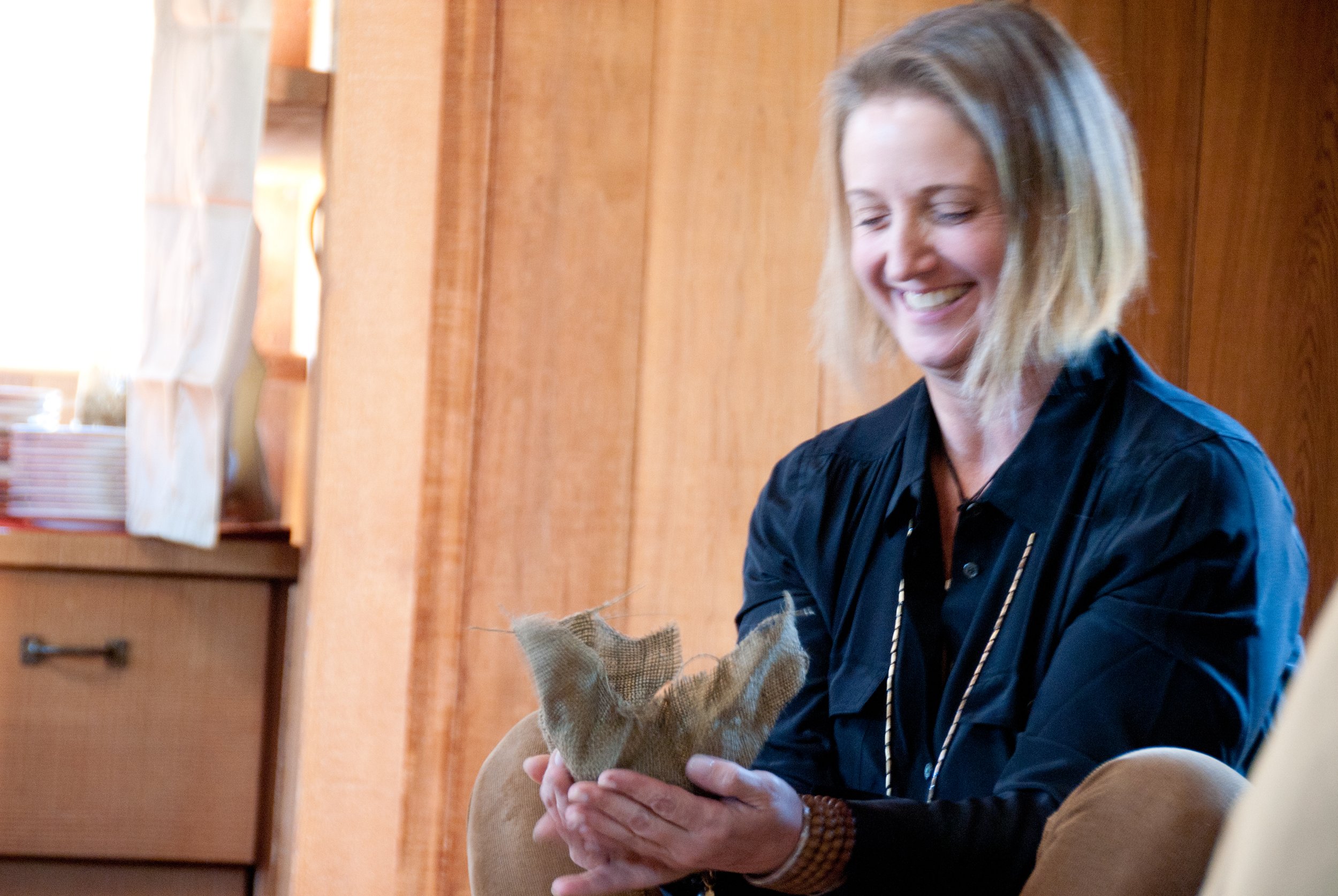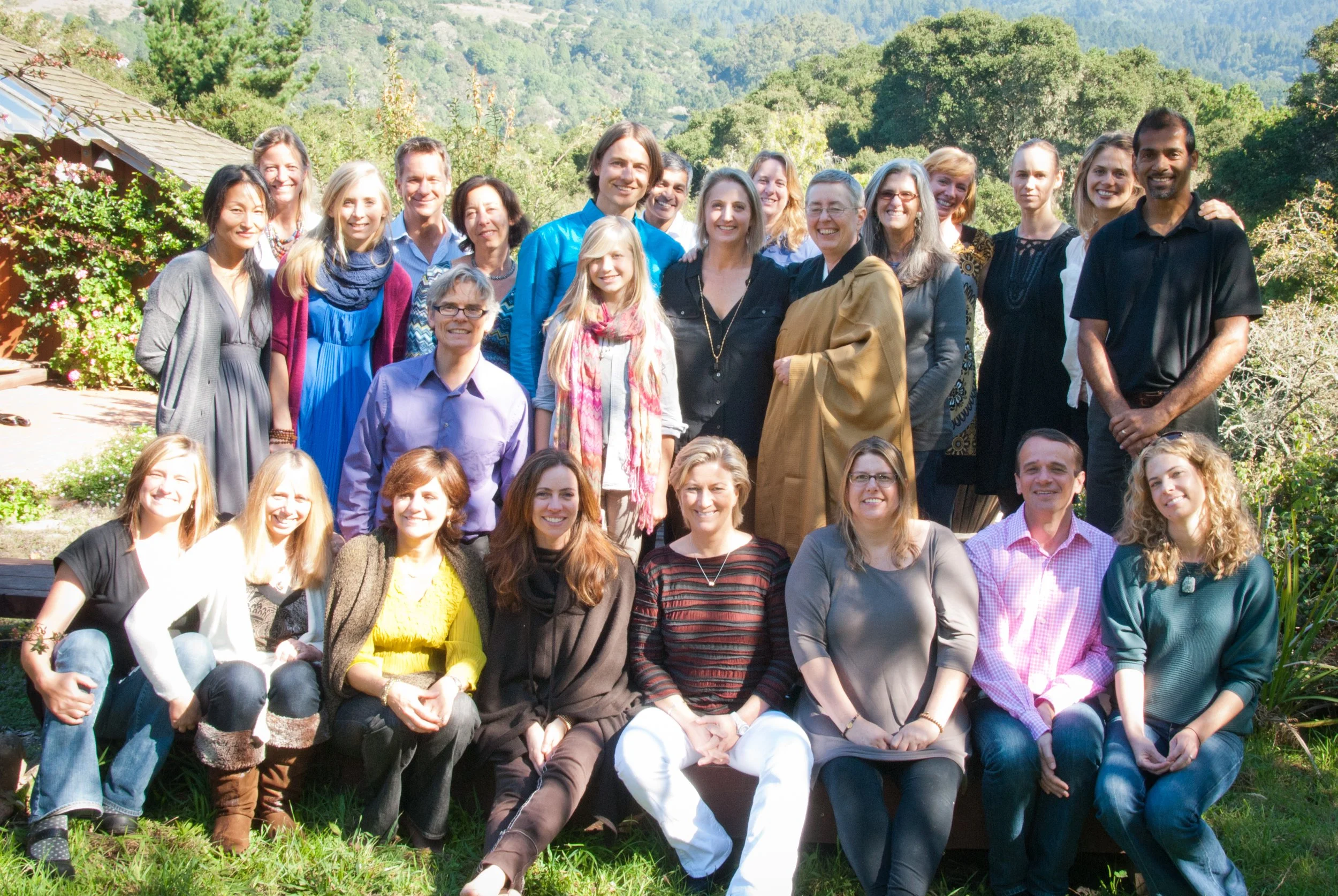Becoming Joryu Myosei
I had always intended to write the story of how I arrived at and took my bodhisattva vow. I hoped my story would serve as an offering, to inspire others to follow their own deep wisdom in creating their unique vision for a path of service. Twelve and a half years later, a recent request from Alexander, a spiritual friend discovered through a shared retreat experience, was the spark that reignited the aliveness in me to put pen to paper now. A heartfelt, white owl thank you, Alexander. May this story be fuel to fan the flame in you and others to take up your version of this path with joy and conviction.
Like many people, my spiritual life began as a child, grounded in the natural world. A dog, a horse, and lots of room to roam in pastures and woods. I had my favorite spots: lying in the grass in the backyard looking up at the clouds, sitting silently in a listening spot surrounded by pine trees, and climbing up as high as I could in one of my favorites to sit for a while, watching, listening, reflecting, and imagining. Those were my first meditations, although I didn’t know them as such back then.
As I got older and life got busier, I didn’t follow a spiritual path or practice. I still spent time in nature, but a career and relationships became my primary areas of focus. And over time I lost something vital. Outwardly, I seemed to be living a vibrant and successful life, but on the inside the split between who I really was and what I was doing kept getting wider. Until life fell apart, unexpectedly and suddenly. By necessity, not really by choice, I took the first pause I had taken in a long, long time. Sitting on a bench overlooking San Francisco Bay, I realized how unfulfilled I actually was and, surprisingly, how readily a deep inner voice spoke to what I needed now – to find a spiritual path that resonated, to choose work that held deeper meaning, and to pay more attention to selfcare. Something in me woke up that day. And it propelled me on an adventure that continues to unfold in the present. I recognize now that this was the moment that I remembered something I had mostly forgotten since childhood – to listen for and follow aliveness. It’s the most important and fundamental spiritual practice I know.
While I began to explore the healing path of integral psychotherapy in my own life and in a return to graduate school at the California Institute of Integral Studies, I also found and fell in love with the Buddha’s teachings and the practice of meditation. I traveled those twin paths for years on my way to healing, growth, and transformation, as well as licensure as a marriage and family therapist. As I began to sit with clients, a third influence, far more mysterious but remembered from childhood, reentered the picture. Intuition and the imaginal realms that make up its domain and symbolic language began to weave their way back into my awareness. So I searched for a teacher and found one in my backyard. My training as an intuitive at the Academy of Intuition Medicine® felt like the missing piece in my becoming. With those three disciplines –transpersonal psychology (and specifically transformative psychotherapy modalities), nondual wisdom teachings and practices, and Intuition Medicine® energy work – I readied myself for my licensure exams.
In meditation, and as my intuitive gifts expanded, I began to receive transmissions of spiritual messages that I felt compelled to follow. The development of my bodhisattva vow and ceremony was one of those experiences. The gist of message I received was that before I could “hang out my shingle” to support others as a psychotherapist/spiritual counselor/energy healer, I needed to take a formal bodhisattva vow to clarify my intention and to express my deeper purpose. I couldn’t work with clients in integrity unless and until I took that step. Being a very private person, the next part of the message terrified me. It wasn’t enough for me to take a vow on my own, I had to do it publicly, to be witnessed by community. All of it brought up a lot of fear, even as I recognized the resonance of Truth and the rightness of that path. My resistance kicked in, but deep down I had no doubt that I would find a way to follow.
In my Theravadan tradition and practice, there wasn’t a clear, established path for taking bodhisattva vows at the time so I didn’t really know how to proceed. Fortunately, or more likely by some grander design, The Reverend Daijaku, my former clinical supervisor who was now a spiritual mentor happened to be a Zen priest. In my discussions with her, she offered to lead me in an inquiry around what taking vows meant to me and how I might create a ceremony to accomplish it. She let me know up front that since I wasn’t a Zen student, she would decide whether or not it felt right for her to lead it based on what I ultimately came up with for a ceremony and vow. It was the beginning of seven month journey into the depths of myself through weekly meetings to explore the calling, the longings, the resistances, the deep knowing. I think of it now as my own small version of facing Mara. That time for inquiry and study and practice was essential to my becoming.
While I ultimately chose the basic structure of the Zen ceremony for taking a bodhisattva vow, Jaku encouraged me to make it my own. So I massaged or changed or added to all of it to do just that, in part because I have an unrelenting independent streak and in part because in order to commit to something this big I knew it had to resonate and integrate all the way down in my bones. I started with reading, contemplating, and discussing both The Way of the Bodhisattva, translated from the teaching by Shantideva in the 8th century at Nalanda University, and No Time to Lose, the commentary on his teaching by Pema Chodron. I absorbed what I could over those preparatory months, realizing that this would be the beginning of a lifetime of study that I pick up and put down as I have time and interest.
To the ceremony, I incorporated elements from many of the traditions and practices that I hold dear in my heart : elements from the natural world – rocks, dirt, salt water, flowers, grasses, and incense to name a few – along with earth-based wisdom practices, meditation, Sufi poetry, Tibetan Buddhist chant, and classical guitar. For the parts of the vow, I had to write it myself using others who had gone before me as my guides. My Repentance & Renewal was negotiated (literally!) with Jaku. I wanted to leave it out. She challenged me to leave it in. Thankfully, her wisdom and experience prevailed in the end. The precepts were another part I felt reluctant to include. Until I read the ones from Thich Nhat Hanh, which opened my heart to the beautiful intentions woven into the language. So I borrowed from him to write the version that I could call my own. The refuges came easily, straight from my heart, honoring buddha nature, dharma, and sangha. And my bodhisattva vow and prayer were written in a way that felt vibrant and alive and would become a creative and sustainable heart practice for me in the years ahead. The steady wisdom and reflections from Jaku were woven throughout.
Only in that way, by wrestling with it piece by piece, could I shape the ideas and words in a way that resonated so completely I could commit to and embody them fully. It was one of most sacred processes I’ve known, and there really aren’t words to express my gratitude to Daijaku for her teaching and guidance. Her gift to me is truly priceless. Every aspect of the ceremony and celebration that followed was deeply intentional and the result of my spiritual practice of intuitive listening and following aliveness. It also felt like an experience of channeling something into creation. Very much an expression of me and my essence, but also beyond me. Most everything was handcrafted by a skilled practitioner, a friend, or made with my own hands in the time leading up tp the ceremony. Other things were collected from nature or gifted from my teacher and community.
And on a beautiful day in late October, in a cottage in West Marin that had once been a home to Buddhist monks and was surrounded by nature, we gathered. It was there that I took my vow, stepping with great humility into that conscious intention to awaken for the benefit of all beings and to support awakening in others and its expression in daily life. And I had received the gift of my dharma name from Jaku. Joryu Myosei, which means quiet dragon, luminous vow. While it was the culmination of that spiritual directive and the inquiry process that followed, it was also the true beginning of my life’s work. Not a destination, but the start of a daily life practice that is alive and creative and insistent to this day. My relationship to it and the expression of it in the world continues to evolve. My “job” is simply to continue to listen deeply and to follow aliveness with as much clarity, joy, and creativity as I can bring to it. I feel honored and blessed every single day to have the opportunity to practice and to be of service. Continuing to open and unfold, I am still a work in progress. And I remain eternally grateful for buddha nature and dharma and especially for sangha – all of the beautiful beings I encounter, who walk their own paths of heart and purpose and who offer love and support to me on mine. I couldn’t do it without you.
In it together for the long haul,
Joryu Myosei




















































